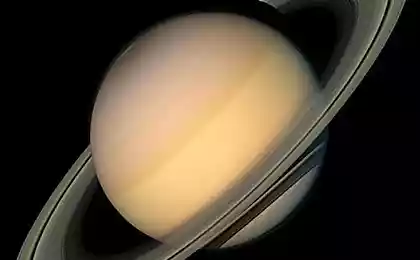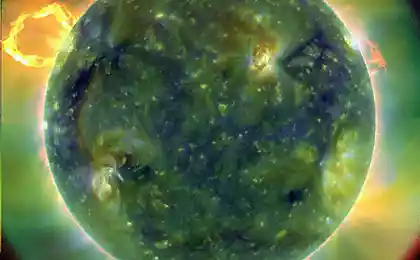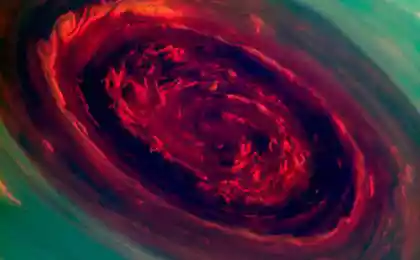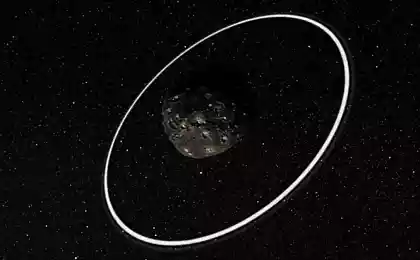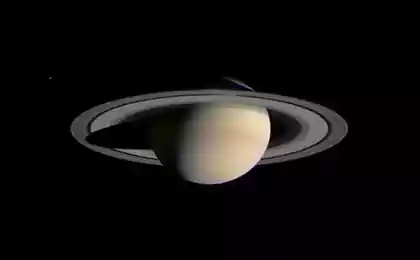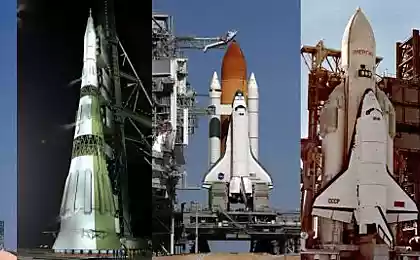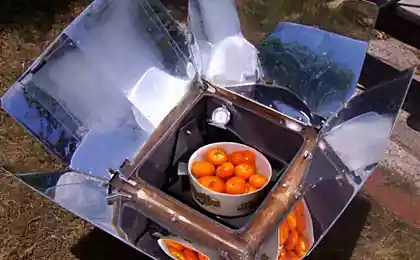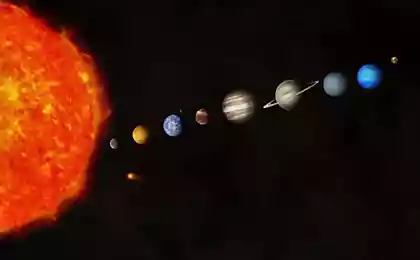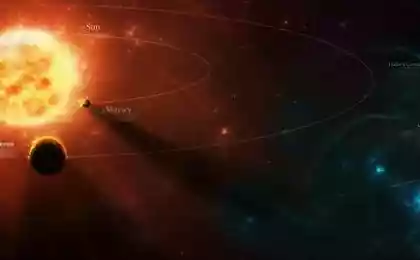1056
Saturn - Lord of the Rings Solar System (32 photos)
This mysterious planet is the second largest in the solar system, second only to Jupiter. Here, the average surface temperature of minus 180 ° C, and the wind speed reaches places 1800 km / h. Saturn has more than 150 satellites and most spectacular ring system.
Launched in 1997, the Cassini spacecraft has spent 7 years traveling to Saturn, and spent the last 9.5 years in orbit massive planet, making scientific discoveries and sending to Earth thousands of magnificent otherworldly images.
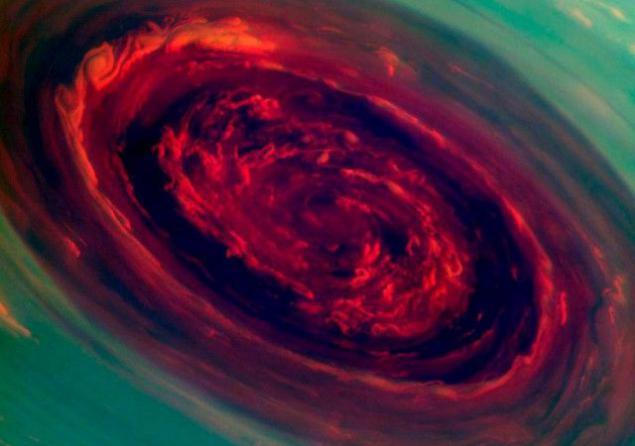
two largest satellite of Saturn - Titan and Rhea. (Photo: NASA | JPL | Space Science Institute):

Saturn relates to a planetary type gas: it consists mainly of gas and has a hard surface. The mass of the planet 95 times the mass of the Earth, however, the average density of Saturn is only 0, 69 g / cm³, making it the only planet of the solar system, whose average density less than the density of water. (Photo: NASA | JPL | Space Science Institute):

Sixth the size of Saturn's moon Enceladus on the background of the rings. In 2011, NASA scientists said Enceladus - the "most suitable for the kind of life as we know it, a place in the solar system beyond Earth." (Photo: NASA | JPL | Space Science Institute):
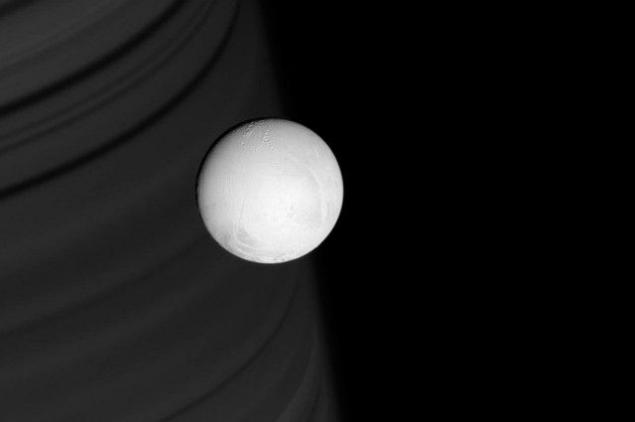
Natural Saturn's moon Prometheus. As sputnik- "shepherd" Prometheus its gravity affects the F ring of Saturn. (Photo: NASA | JPL | Space Science Institute):

Satellite Elena is 33 kilometers in diameter. (Photo: NASA | JPL | Space Science Institute):
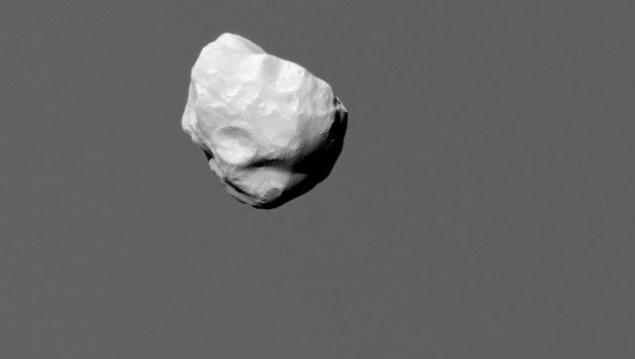
And this is a natural satellite of Saturn Dione. In May 2013 on the basis of "Cassini" specialists from NASA's Jet Propulsion Laboratory have suggested that beneath the surface of Dione may or once had an ocean. (Photo: NASA | JPL | Space Science Institute):
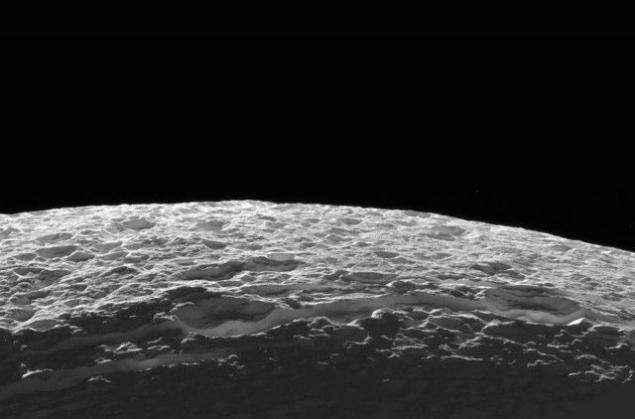
The satellite Mimas. With a size of about 400 kilometers, is the 20th-largest moon in the Solar System. Mimas is the smallest known celestial body that has a rounded shape due to its own gravity. A distinctive feature of Mimas is the huge impact crater Herschel (right) with a diameter of 130 km, named after the discoverer of the satellite. Probably far in the past with Mimas I faced huge asteroid and a crater Herschel. Blow appear almost split the moon of Saturn. (Photo: NASA | JPL | Space Science Institute):
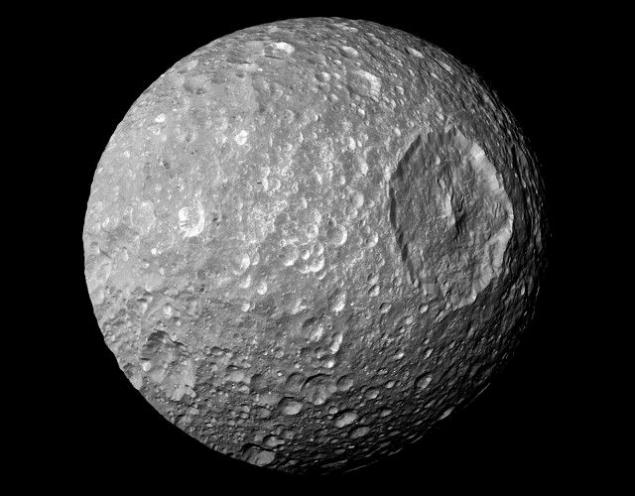
Portrait of the gas giant Saturn, its rings, and a small, icy moon Mimas. (Photo: NASA | JPL | Space Science Institute):
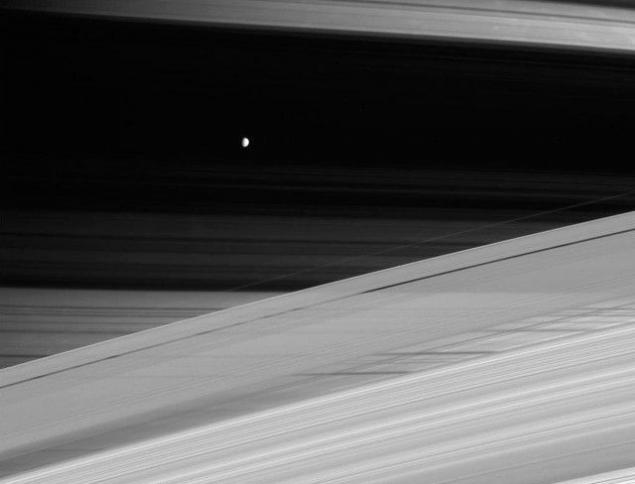
Wall of Iapetus - ring ridge encircling the equator of Saturn's Iapetus moon. The wall has a height of 13 kilometers, 20 kilometers wide and a length of 1, 3 thousand kilometers. (Photo: NASA | JPL | Space Science Institute):
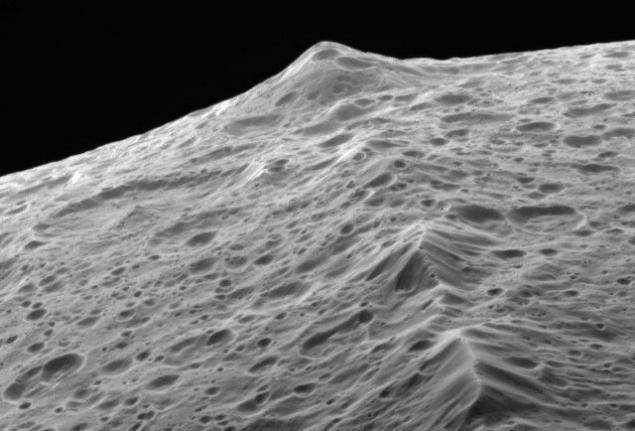
Iapetus - the third-largest moon of Saturn, and the twenty-fourth of the distance from it. (Photo: NASA | JPL | Space Science Institute):
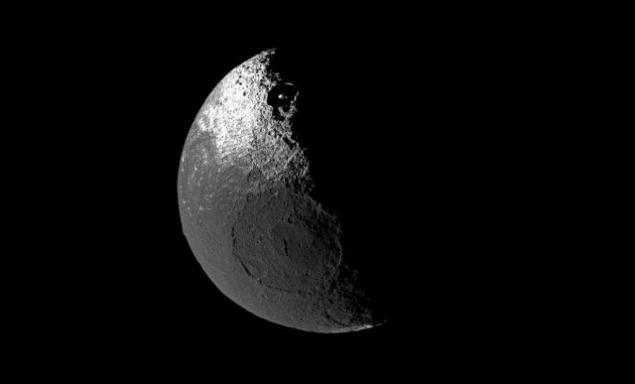
Above - the satellite Rhea ahead - Dione and Saturn's rings. (Photo: NASA | JPL | Space Science Institute):
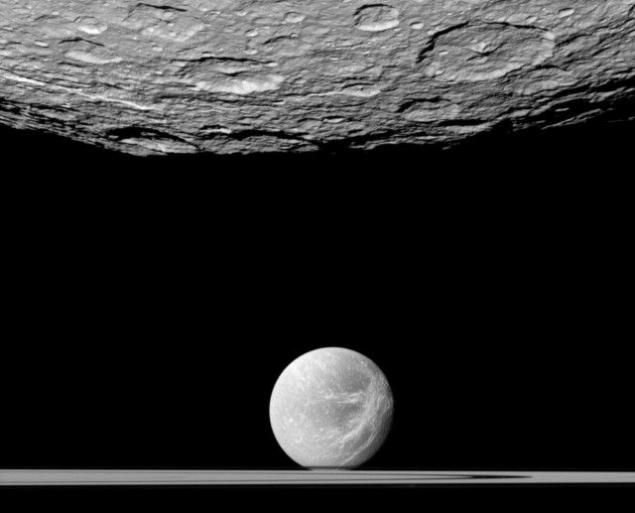
Small Saturn Calypso. (Photo: NASA | JPL | Space Science Institute):
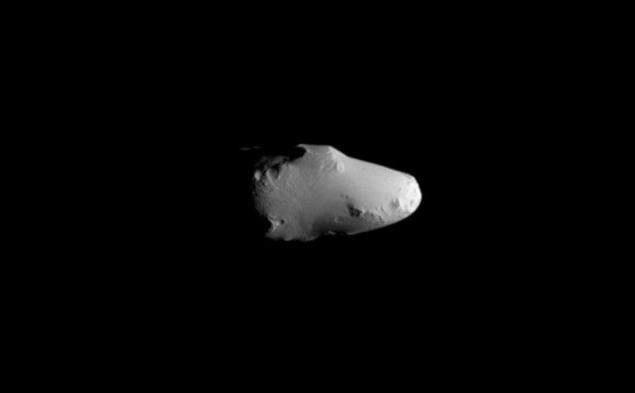
Sunlight reflecting off a lake on Titan. It is the largest moon of Saturn, the second largest moon in the Solar System (after Jupiter's moon Ganymede), is the only one besides the earth, the body in the solar system, for which proved the existence of liquid on the surface. Titanium is also superior to the size of the planet Mercury, although inferior to her weight. The mass of Titan is 95% of the mass of Saturn's moons. On the surface there is a methane-ethane lakes and rivers. (Photo: NASA | JPL | University of Arizona | DLR):

360-degree, bright sunset on Titan. (Photo: NASA | JPL | Space Science Institute):
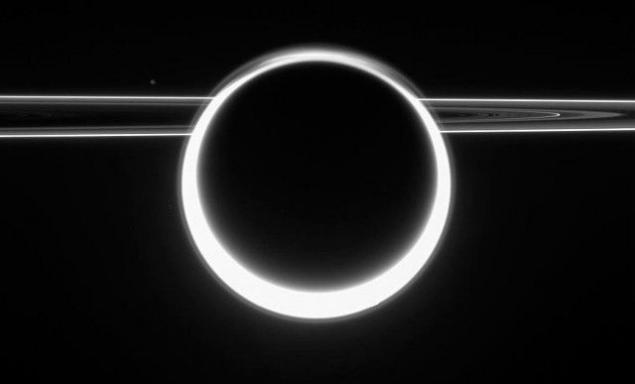
Mysterious hexagon on top of the north pole of Saturn. (Photo: NASA | JPL | Space Science Institute):
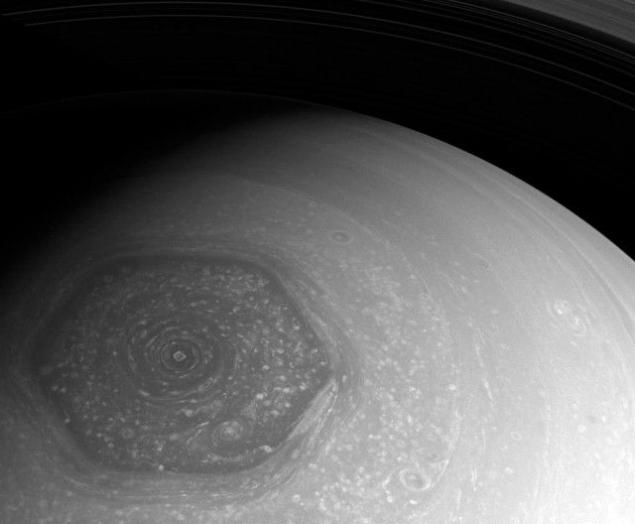
A stunning portrait of the satellite Enceladus. This is one of the smallest spherical satellites of Saturn. (Photo: NASA | JPL | Space Science Institute):
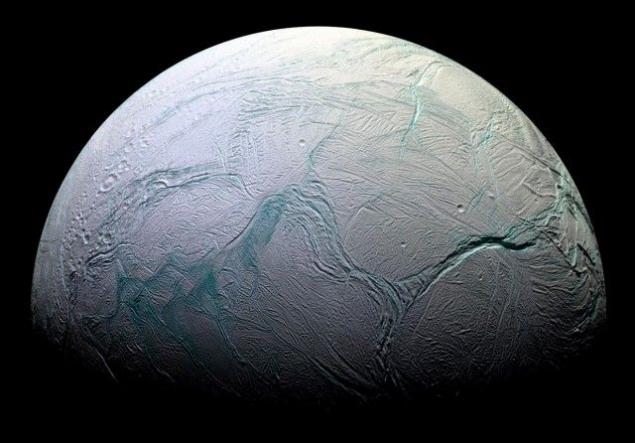
The surface of Enceladus. The picture shot from a distance of about 1690 kilometers. (Photo: NASA | JPL | Space Science Institute):
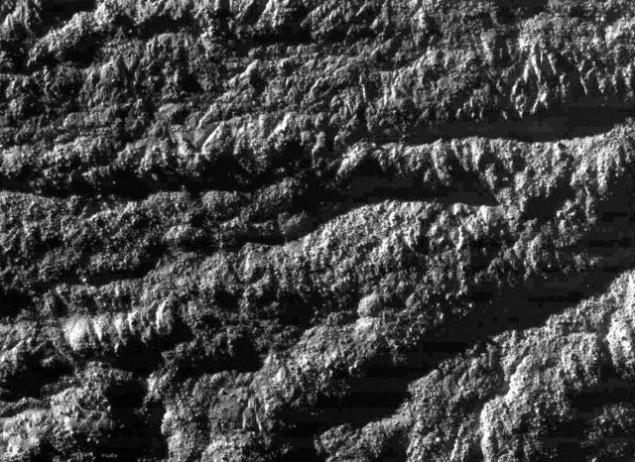
Saturn, its rings and bright spots - moons Atlas and Pan. (Photo: NASA | JPL | Space Science Institute):
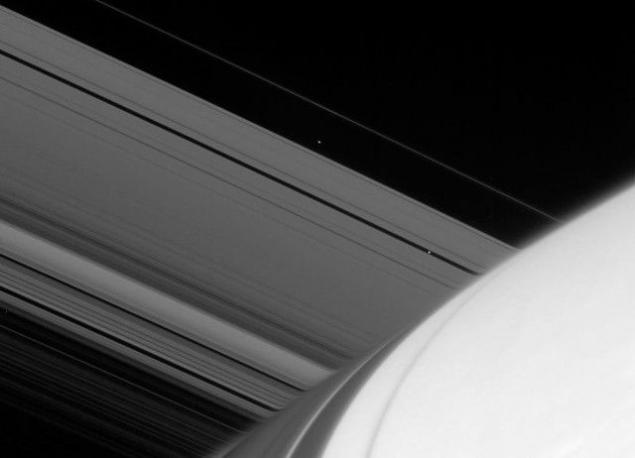
The inner satellite of the planet Saturn - Epimetheus. (Photo: NASA | JPL | Space Science Institute):

Mimas looks out over the night side of the large satellites of Dione. (Photo: NASA | JPL | Space Science Institute):
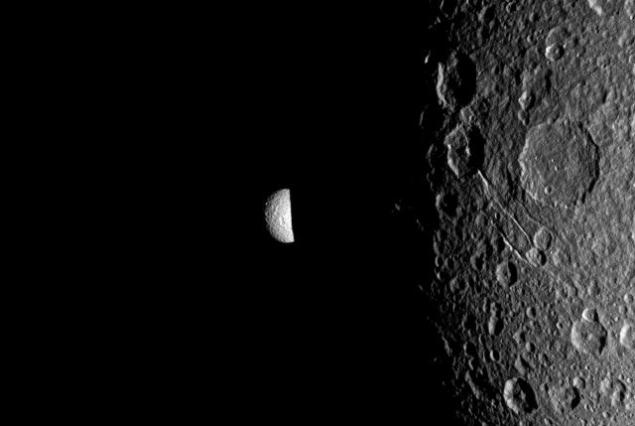
The vortex at the north pole of Saturn, a huge cyclone 2000 km wide. (Photo: NASA | JPL | Space Science Institute):
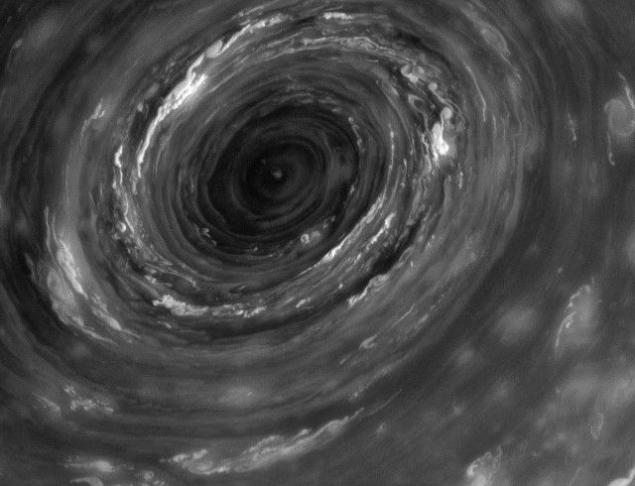
The satellite Enceladus against the backdrop of the gas giant Saturn. (Photo: NASA | JPL | Space Science Institute):

The surface of the satellite Dione. Perhaps once Dion has been deployed as a result of the impact of a large celestial body. Judging by the abundance of large craters on Dione, a reversal could occur repeatedly. (Photo: NASA | JPL | Space Science Institute):
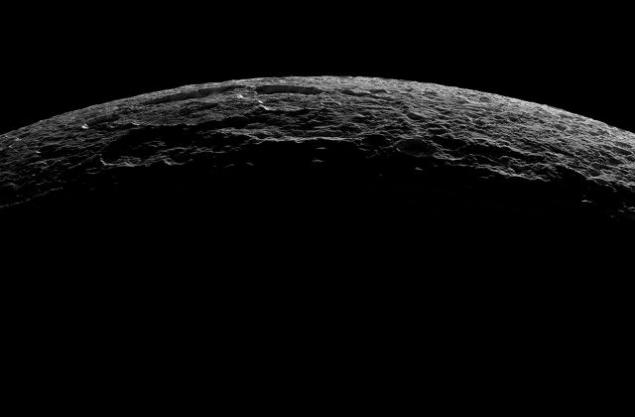
Sunlit rings of Saturn. (Photo: NASA | JPL | Space Science Institute):

The satellite Mimas against the backdrop of Saturn. (Photo: NASA | JPL | Space Science Institute):
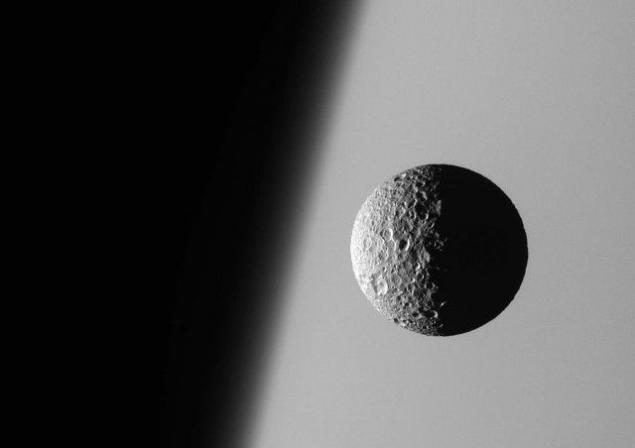
The surface of Saturn. Basically gas giant consists of hydrogen, helium and impurities with traces of water, methane, ammonia and heavy elements. (Photo: NASA | JPL | Space Science Institute):

4 satellites. In the background - a huge Titan, his background - moon Dione, on the right - Pandora speck left - Ban satellite. (Photo: NASA | JPL | Space Science Institute):

As Huygens assumed more rings are not solid hard body and composed of billions of tiny particles that are in orbit around. Saturn's rings are very thin. With a diameter of about 250 000 km of their thickness is less than a kilometer. In composition, they comprise 93% of the ice with minor impurities. (Photo: NASA | JPL | Space Science Institute):
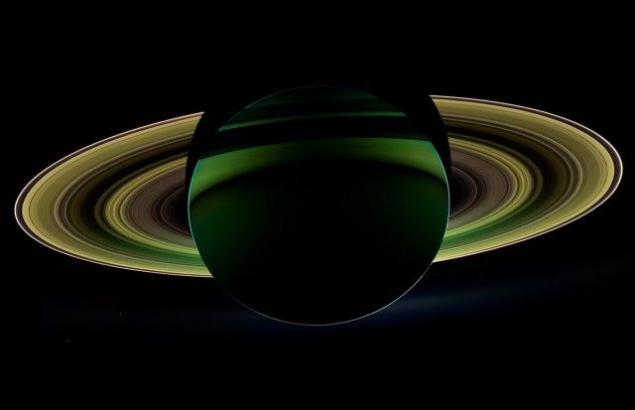
A giant moon Titan and Dione against the backdrop of Saturn's rings. (Photo: NASA | JPL | Space Science Institute):
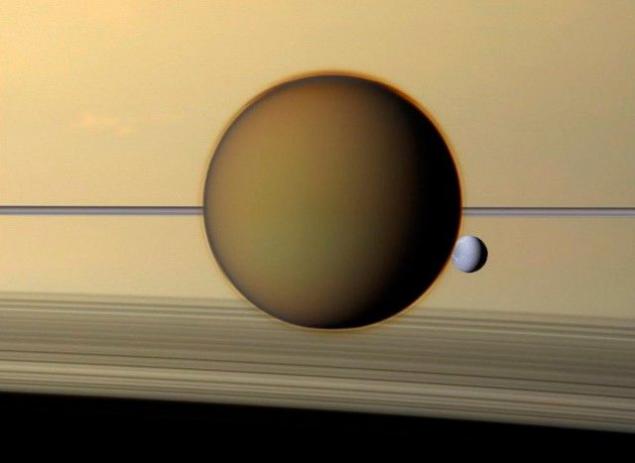
Dion against the backdrop of Saturn. (Photo: NASA | JPL | Space Science Institute):

The most powerful hurricane on record for solar system raged on Saturn last year. Impressive images of this cosmic phenomenon managed to make the spacecraft Cassini-Huygens mission. This hurricane, a diameter of about 300 km, covering the north pole of Saturn is equal to half the area of Australia.
Scientists say that it started a few years ago. The main difference between a hurricane on Earth - the huge size and very high speed of rotation. Diameter - about 2 000 km. On Saturn, the wind speed in the "eyes" of more than 500 km per hour.
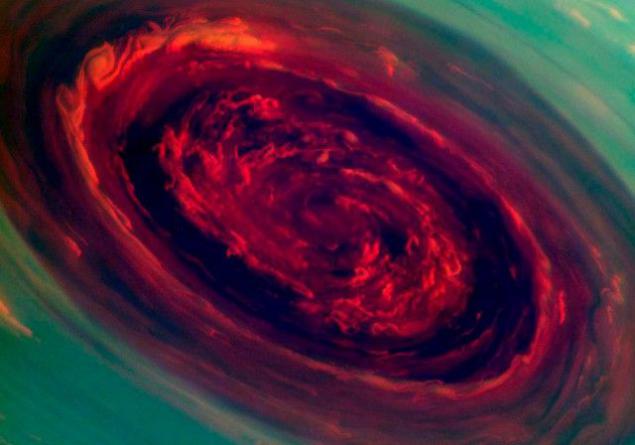
Launched in 1997, the Cassini spacecraft has spent 7 years traveling to Saturn, and spent the last 9.5 years in orbit massive planet, making scientific discoveries and sending to Earth thousands of magnificent otherworldly images.

two largest satellite of Saturn - Titan and Rhea. (Photo: NASA | JPL | Space Science Institute):

Saturn relates to a planetary type gas: it consists mainly of gas and has a hard surface. The mass of the planet 95 times the mass of the Earth, however, the average density of Saturn is only 0, 69 g / cm³, making it the only planet of the solar system, whose average density less than the density of water. (Photo: NASA | JPL | Space Science Institute):

Sixth the size of Saturn's moon Enceladus on the background of the rings. In 2011, NASA scientists said Enceladus - the "most suitable for the kind of life as we know it, a place in the solar system beyond Earth." (Photo: NASA | JPL | Space Science Institute):

Natural Saturn's moon Prometheus. As sputnik- "shepherd" Prometheus its gravity affects the F ring of Saturn. (Photo: NASA | JPL | Space Science Institute):

Satellite Elena is 33 kilometers in diameter. (Photo: NASA | JPL | Space Science Institute):

And this is a natural satellite of Saturn Dione. In May 2013 on the basis of "Cassini" specialists from NASA's Jet Propulsion Laboratory have suggested that beneath the surface of Dione may or once had an ocean. (Photo: NASA | JPL | Space Science Institute):

The satellite Mimas. With a size of about 400 kilometers, is the 20th-largest moon in the Solar System. Mimas is the smallest known celestial body that has a rounded shape due to its own gravity. A distinctive feature of Mimas is the huge impact crater Herschel (right) with a diameter of 130 km, named after the discoverer of the satellite. Probably far in the past with Mimas I faced huge asteroid and a crater Herschel. Blow appear almost split the moon of Saturn. (Photo: NASA | JPL | Space Science Institute):

Portrait of the gas giant Saturn, its rings, and a small, icy moon Mimas. (Photo: NASA | JPL | Space Science Institute):

Wall of Iapetus - ring ridge encircling the equator of Saturn's Iapetus moon. The wall has a height of 13 kilometers, 20 kilometers wide and a length of 1, 3 thousand kilometers. (Photo: NASA | JPL | Space Science Institute):

Iapetus - the third-largest moon of Saturn, and the twenty-fourth of the distance from it. (Photo: NASA | JPL | Space Science Institute):

Above - the satellite Rhea ahead - Dione and Saturn's rings. (Photo: NASA | JPL | Space Science Institute):

Small Saturn Calypso. (Photo: NASA | JPL | Space Science Institute):

Sunlight reflecting off a lake on Titan. It is the largest moon of Saturn, the second largest moon in the Solar System (after Jupiter's moon Ganymede), is the only one besides the earth, the body in the solar system, for which proved the existence of liquid on the surface. Titanium is also superior to the size of the planet Mercury, although inferior to her weight. The mass of Titan is 95% of the mass of Saturn's moons. On the surface there is a methane-ethane lakes and rivers. (Photo: NASA | JPL | University of Arizona | DLR):

360-degree, bright sunset on Titan. (Photo: NASA | JPL | Space Science Institute):

Mysterious hexagon on top of the north pole of Saturn. (Photo: NASA | JPL | Space Science Institute):

A stunning portrait of the satellite Enceladus. This is one of the smallest spherical satellites of Saturn. (Photo: NASA | JPL | Space Science Institute):

The surface of Enceladus. The picture shot from a distance of about 1690 kilometers. (Photo: NASA | JPL | Space Science Institute):

Saturn, its rings and bright spots - moons Atlas and Pan. (Photo: NASA | JPL | Space Science Institute):

The inner satellite of the planet Saturn - Epimetheus. (Photo: NASA | JPL | Space Science Institute):

Mimas looks out over the night side of the large satellites of Dione. (Photo: NASA | JPL | Space Science Institute):

The vortex at the north pole of Saturn, a huge cyclone 2000 km wide. (Photo: NASA | JPL | Space Science Institute):

The satellite Enceladus against the backdrop of the gas giant Saturn. (Photo: NASA | JPL | Space Science Institute):

The surface of the satellite Dione. Perhaps once Dion has been deployed as a result of the impact of a large celestial body. Judging by the abundance of large craters on Dione, a reversal could occur repeatedly. (Photo: NASA | JPL | Space Science Institute):

Sunlit rings of Saturn. (Photo: NASA | JPL | Space Science Institute):

The satellite Mimas against the backdrop of Saturn. (Photo: NASA | JPL | Space Science Institute):

The surface of Saturn. Basically gas giant consists of hydrogen, helium and impurities with traces of water, methane, ammonia and heavy elements. (Photo: NASA | JPL | Space Science Institute):

4 satellites. In the background - a huge Titan, his background - moon Dione, on the right - Pandora speck left - Ban satellite. (Photo: NASA | JPL | Space Science Institute):

As Huygens assumed more rings are not solid hard body and composed of billions of tiny particles that are in orbit around. Saturn's rings are very thin. With a diameter of about 250 000 km of their thickness is less than a kilometer. In composition, they comprise 93% of the ice with minor impurities. (Photo: NASA | JPL | Space Science Institute):

A giant moon Titan and Dione against the backdrop of Saturn's rings. (Photo: NASA | JPL | Space Science Institute):

Dion against the backdrop of Saturn. (Photo: NASA | JPL | Space Science Institute):

The most powerful hurricane on record for solar system raged on Saturn last year. Impressive images of this cosmic phenomenon managed to make the spacecraft Cassini-Huygens mission. This hurricane, a diameter of about 300 km, covering the north pole of Saturn is equal to half the area of Australia.
Scientists say that it started a few years ago. The main difference between a hurricane on Earth - the huge size and very high speed of rotation. Diameter - about 2 000 km. On Saturn, the wind speed in the "eyes" of more than 500 km per hour.

